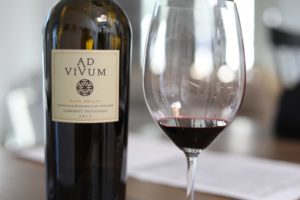
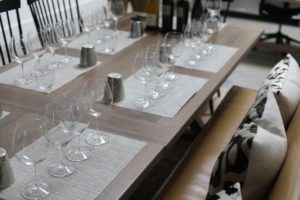
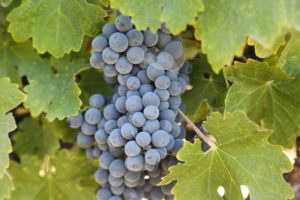 Ad Vivum Cellars produces a single wine, from a single vineyard in Yountville from a single clone of Cabernet Sauvignon produced each year by long time Napa winemaker Chris Phelps (no relation to Joseph Phelps). Chris was raised in Livermore – just “down the street” from Concannon Winery. He earned his degree in Viticulture from UC Davis in 1981. After graduating he interned at Louis Martini Winery in St. Helena where he worked for their winemaker at the time, Mike Martini (who Chris considers one of his mentors in the business), then left for 16 months exploring Bordeaux. He had accepted a position at Chateau Petrus but the postcard he sent from southern France was never received and when he followed up, to his dismay he discovered they did not initially have a position for him. But fortunately, he was offered a different position a few days later; in 1984 moved to Bordeaux and lived and worked on the Chateau Petrus estate.
Ad Vivum Cellars produces a single wine, from a single vineyard in Yountville from a single clone of Cabernet Sauvignon produced each year by long time Napa winemaker Chris Phelps (no relation to Joseph Phelps). Chris was raised in Livermore – just “down the street” from Concannon Winery. He earned his degree in Viticulture from UC Davis in 1981. After graduating he interned at Louis Martini Winery in St. Helena where he worked for their winemaker at the time, Mike Martini (who Chris considers one of his mentors in the business), then left for 16 months exploring Bordeaux. He had accepted a position at Chateau Petrus but the postcard he sent from southern France was never received and when he followed up, to his dismay he discovered they did not initially have a position for him. But fortunately, he was offered a different position a few days later; in 1984 moved to Bordeaux and lived and worked on the Chateau Petrus estate.
Upon returning to Napa Valley, Chris became winemaker at the new Christian Moueix owned Dominus in Yountville; he was their founding winemaker and spent 12 years as their winemaker from 1984 until 1996. Chris considers the 1991 bottling one of the best vintages he made at Dominus. Later, he also made wine for Caymus and was head winemaker at Swanson Vineyards in Rutherford for twelve years.
The roots for Ad Vivum begin in 1990 when Chris met Larry Bettinelli on a Christian men’s retreat. Larry happened to grow up in Napa, is a 5th generation farmer and both he and Chris connected over their shared passion for wine. Larry was selling his grapes to larger wineries where they were often blended into a much larger production wine. He wanted to focus on a smaller production wine where the varietal characteristics were preserved in the wine making.
Since 1990 he has given Chris a ton or two of grapes each year. Larry sets aside several rows where he can experiment with trellising and various vineyard management practices. Chris then made wine for many years for personal use as well as an altar wine for use in his church in St. Helena. This was probably one of the finest and certainly few hand-crafted altar wines one will ever find in Napa Valley!
Starting in 2005 Larry identified 8 rows (which works out to .91 of an acre) for Chris in the Sleeping Lady Vineyard located in Yountville. Coincidentally this vineyard is located just south of Dominus. This is a great vineyard neighborhood, Harlan Estate purchases fruit from the area as does winemakers Julien Fayard and Jean Hoefliger. Since then, Chris has continued to source from these 8 rows of Cabernet Sauvignon clone 191; his first commercial release was from the 2007 vintage.
A few days after cold soaking the fruit in 2007 in the early stages of fermentation Chris still excitedly remembers how he was immediately drawn to the unique aromatics of this wine. He describes the aromas as having “grace” or referencing a musical term, a “top note”. The aromatics and palate are from a unique combination of clone and soil (terroir); Chris has worked with this particular clone before and doesn’t recall these particular aromatics in other wines. The wine also typically has a nice purple iridescent in color on its rim in the glass. Chris remembers one sommelier insisting this wine was blended with Petit Verdot. Not so, every year it is 100% varietal Cabernet Sauvignon.
Chris usually harvests on the early side and is judicious about the amount of oak used during aging (French oak). He notices that the Ad Vivum wines need some time in bottle to really start showing, usually starting around 6 years.
Select Wines
With such a small production, there are no outside employees. Chris is the winemaker and his son Josh (who also owns and operates several much larger produced wine labels) helps with sales and the business side of the operations. Josh is also a winemaker, having launched Taken Wine Company in 2010 (he later sold his share of this brand), founded Grounded Wine Company (wines from California, Oregon and Washington) and also operates Coil Wines with his father, producing a Mendocino County Pinot Noir and a rare old-vine Napa Valley Chenin Blanc.
The Ad Vivum wines have energy and vitality; their core is fruit driven but always accompanied by a freshness of acidity. These are bottlings that will shine when tasted alongside Napa Valley contemporary produced riper and higher alcohol Cabernet Sauvignon bottlings.
Ad Vivum
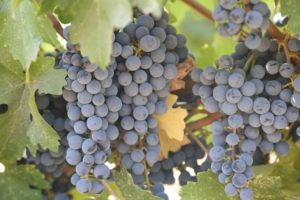
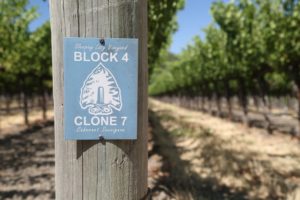
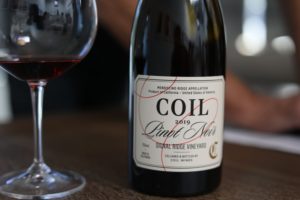 The 2018 Ad Vivum Cabernet Sauvignon is dark ruby in the glass and almost opaque; the bouquet is elegant showcasing primarily darker fruits but also a floral component (violets). Its aromatics are a pleasing union between dark fruits and spices including old cedar box, bittersweet chocolate, hints of dried herbs, tobacco smoke and spicy plum skin. As the wine evolves in the glass the aromas become more fruit focused. This wine is savory across the palate with flavors of plum, darker pepper notes and tightly woven, dusty and persistent tannins. This wine is like a boisterous teenager, full of energy bouncing around the palate with its lively acidity, densely textured tannins and bright fruit. This wine is built to age at least several decades.
The 2018 Ad Vivum Cabernet Sauvignon is dark ruby in the glass and almost opaque; the bouquet is elegant showcasing primarily darker fruits but also a floral component (violets). Its aromatics are a pleasing union between dark fruits and spices including old cedar box, bittersweet chocolate, hints of dried herbs, tobacco smoke and spicy plum skin. As the wine evolves in the glass the aromas become more fruit focused. This wine is savory across the palate with flavors of plum, darker pepper notes and tightly woven, dusty and persistent tannins. This wine is like a boisterous teenager, full of energy bouncing around the palate with its lively acidity, densely textured tannins and bright fruit. This wine is built to age at least several decades.
The 2017 Ad Vivum Cabernet Sauvignon is dark ruby in the glass; the bouquet offers elegant but powerful aromatics including of a five-star Asian spice, dark plum, light notes of pepper, other dark spices including light cedar and dried rose petal. We would like to think we could pick this wine out of a lineup of other Napa Valley Cabernet Sauvignon bottlings, based on aromas alone. Former winemaker at Chateau Petrus, Jean-Claude Berrouet told Chris he always noticed a black raspberry component on the Ad Vivum wines. This bottling offers flavors of red cherry, a tartness of currant and Icelandic crowberries. The tannins are still tightly woven lingering with a noticeable gravelly textural grip, and a dusty feel along with salivating acidity. This wine has several decades of life ahead of it. No question.
The 2011 vintage was a fairly cool year in Napa Valley; some of the wines we have tasted from this vintage have some herbal qualities. Not so with this one – the grapes from the Sleeping Lady vineyard were able to fully ripen prior to the cool and early rains that plagued this vintage. Aromatically the 2011 Ad Vivum Cabernet Sauvignon is pleasing, showing notes of raspberry and black berry; it offers an elegant bouquet with a wonderful complexity which keeps evolving as the wine opens. Higher toned fruit shows on the palate including flavors of raspberry. This wine shows good acidity and restraint; it is not a ripe or overly extracted Napa Valley Cabernet Sauvignon. The tannins linger for some time as does the fruit. This bottling should age quite well.
The 2012 Ad Vivum Cabernet Sauvignon had only been bottled 8 weeks prior to our tasting and as a result, was still a bit closed, but over time this wine opened and evolved wonderfully in the glass. Chris most enjoys drinking his wines when they are allowed to open over a good amount of time – say 2-3 hours at meal. This way one can really notice how they evolve both aromatically and on the palate. This wine is dark ruby in the glass. The bouquet shows darker fruit with a slight chalky component, is slightly floral and reveals hints of mocha as the wine breathes. The palate is perhaps a little more robust than the 2011. It shows flavors of dark plum and red fruits – initially the tannins are rigid and gripping, but as the wine is allowed to sit in the glass the tannins smooth out and become better integrated. It is neat to see this happen in a matter of merely about 20 minutes.
Coil
2018 was the inaugural vintage of Coil. These wines are always single varietal single vineyard bottlings. The world coil strongly relates to the world of wine; Chris relates it to the tension one can experience in wine between flavor, acidity and texture but also to art, conversation, music and food. A compressed coil contains energy, which when it is allowed to extend, releases energy – somewhat like liberating ‘energy’ from a wine bottle when it is opened. And the circular shape of a coil relates to the circularity of the seasons in the vineyard and in the cellar.
In regard to a Cabernet Sauvignon focused producer making Pinot Noir, Chris says it is very tempting to produce a darker, well extracted and perhaps a riper bottling of wines from this variety. But that is not his style. He prefers wines which are elegant yet complex, rather than being bold. The freshness of the site and of the variety is clearly evident in the several Coil Pinot Noir wines we tried.
The 2019 Coil Signal Ridge Vineyard Pinot Noir Anderson Valley, Mendocino County is from a site at about 2,600 feet in elevation. And bears like the grapes and often frequent the property. The bouquet shows more spice up front than the 2018 bottling including white pepper. But the vitality of the fruit is certainly evident. The palate offers a diversity of red fruits including cherry and currant. A mouthwatering tartness lingers on the finish. This wine offers a bit more structure and intensity than the 2018 bottling, finishing with lightly textured dusty tannins. All the grapes were fermented together with 30% as whole cluster. This wine was aged for 16 months in 30% new French oak.
The 2018 Coil Signal Ridge Vineyard Pinot Noir Anderson Valley, Mendocino County is medium ruby in color; the focus of the aromatics is on fruits including cherry and black raspberry, complemented nicely by notes of dried herbs, a hint of cardamom, chocolate and dried rose petals. The palate is the definition of balanced and seamless. It offers flavors of red cherry, currant and pomegranate along with an underlying herbal note. The tannins are felt softly with a lingering refreshing brightness. Both the 2018 and 2019 vintages were only 13.1% alcohol.
The 2019 Coil Chenin Blanc was sourced from vines in Henry Ranch dating to the 1940s on the hillsides east of and below the Howell Mountain Appellation. Other Napa Valley based producers who have or had access to these coveted old vines including Aloft and Gaderian. This wine is straw color in the glass; the bouquet offers a pretty union of both floral and citrus aromatics including of lemon/lime, lemongrass, honeycomb and dried hay. The flavors are diverse and include white peach, nectarine, tangerine, green apple, a lemon/lime note and a flinty-like minerality. Its lightly creamy texture runs the length of the palate, lingering bright and refreshing. This wine is 12.9% alcohol and was aged in all once-used French oak barrels.
—
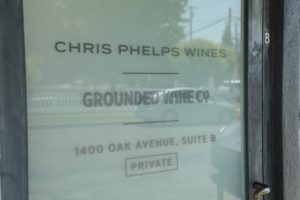
 The name Ad Vivum is creative; it is derived from Latin and means life, or to live; the intersection of where wine and life meet. When wine is used appropriately it enhances life. The symbol on each bottle dates from Babylonia and represents fertility or life. And over the years, this name has strongly related to specific events in Chris’s own life.
The name Ad Vivum is creative; it is derived from Latin and means life, or to live; the intersection of where wine and life meet. When wine is used appropriately it enhances life. The symbol on each bottle dates from Babylonia and represents fertility or life. And over the years, this name has strongly related to specific events in Chris’s own life.
To tie in the name and the symbol of the wine, one must backtrack a few years. Chris was hiking to the summit of Mt. Whitney with a number of boy scouts and winemaker Stu Smith of Smith-Madrone Winery in late July 2005 when their group was hit by lightning. Two died in the strike and Chris was also struck and rendered unconscious. It is moments like that that make one realize how truly fragile life is and how quickly it can pass by. In this case, his wine is a celebration of continued life.
With production usually running just several hundred cases each year, the wines are selectively distributed – both direct, locally at wine shops and restaurants including ACME in St. Helena, Backroom Wines in Napa and as a vertical at Press and Bottega Restaurants. Distribution is also available in select retail locations in Texas, Florida, Las Vegas, Germany and Japan.
Tastings are held in a private space next to Sam’s General Store in St. Helena with Chris or Josh or both; this is a lounge type space formerly occupied by Marston Family Wines. And in addition to Ad Vivum wines, appointments can also be made for Grounded Wine Company. For more information, to purchase wine, or to schedule a private tasting, visit: www.advivumcellars.com

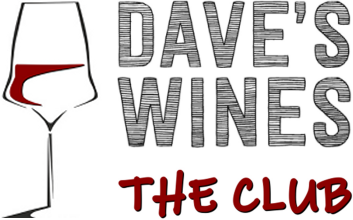




Chris I was introduced to a couple yesterday that recently visited with you & told me your story.
I own two companies that vet our guests & work on highlighting small boutique wineries in both Napa & Sonoma.
Can you please let me know the best phone number to call you at. I would very much like to schedule a visit.
Thank you,
Ona Marks
707-483-0123
Ona – thanks for reaching out. Chris is making some very special wines. I’ll drop him your note directly.
~ Dave